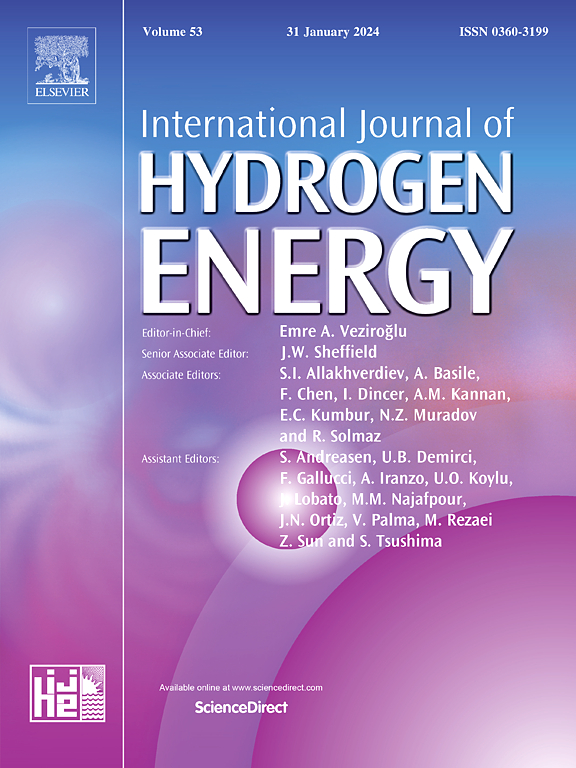孔隙中氢瞬时俘获的有限元模拟
IF 8.3
2区 工程技术
Q1 CHEMISTRY, PHYSICAL
引用次数: 0
摘要
在连续介质力学和韧性损伤(Gurson-Tvergaard-Needleman模型)的背景下,通过有限元模拟研究了位错和空隙中瞬时氢捕获的竞争。数值模型应用于文献中的小规模屈服配置,在两种氢气加载情况下,对应于气态和阴极环境,以及两种初始配置(饱和和无氢),代表两种极限情况的测试。对于低初始浓度,在机械加载结束时,空洞的存在不会显著改变晶格氢或位错上捕获的氢的分布。对于表示阴极负载的初始浓度,与其他浓度相比,位错捕获的氢的浓度可以忽略不计。然而,在机械加载结束时,孔洞对晶格氢浓度的影响非常显著,其在裂纹尖端之前的值非常低。在所有情况下,由于在空隙中被捕获,总氢浓度显著增加。本文章由计算机程序翻译,如有差异,请以英文原文为准。
Finite element modeling of hydrogen instantaneous trapping in porosities
The competition between instantaneous hydrogen trapping on dislocations and in voids is studied in the context of continuum mechanics and ductile damage (Gurson-Tvergaard-Needleman model) by finite element simulations. The numerical model is applied to a small-scale yielding configuration from the literature, in two hydrogen loading cases, corresponding to gaseous and cathodic environments, and two initial configurations (saturated and hydrogen-free), representing two limiting situations for the tests.
For low initial concentrations, the presence of voids does not significantly modify the distribution of lattice hydrogen or hydrogen trapped on dislocations at the end of mechanical loading.
For initial concentrations representing cathodic loading, the concentration of hydrogen trapped by dislocations is negligible compared to other concentrations. The impact of voids on the lattice hydrogen concentration, however, is very significant at the end of mechanical loading, and its value ahead of the crack tip is very low.
In all cases, the total hydrogen concentration increases significantly due to trapping in the voids.
求助全文
通过发布文献求助,成功后即可免费获取论文全文。
去求助
来源期刊

International Journal of Hydrogen Energy
工程技术-环境科学
CiteScore
13.50
自引率
25.00%
发文量
3502
审稿时长
60 days
期刊介绍:
The objective of the International Journal of Hydrogen Energy is to facilitate the exchange of new ideas, technological advancements, and research findings in the field of Hydrogen Energy among scientists and engineers worldwide. This journal showcases original research, both analytical and experimental, covering various aspects of Hydrogen Energy. These include production, storage, transmission, utilization, enabling technologies, environmental impact, economic considerations, and global perspectives on hydrogen and its carriers such as NH3, CH4, alcohols, etc.
The utilization aspect encompasses various methods such as thermochemical (combustion), photochemical, electrochemical (fuel cells), and nuclear conversion of hydrogen, hydrogen isotopes, and hydrogen carriers into thermal, mechanical, and electrical energies. The applications of these energies can be found in transportation (including aerospace), industrial, commercial, and residential sectors.
 求助内容:
求助内容: 应助结果提醒方式:
应助结果提醒方式:


